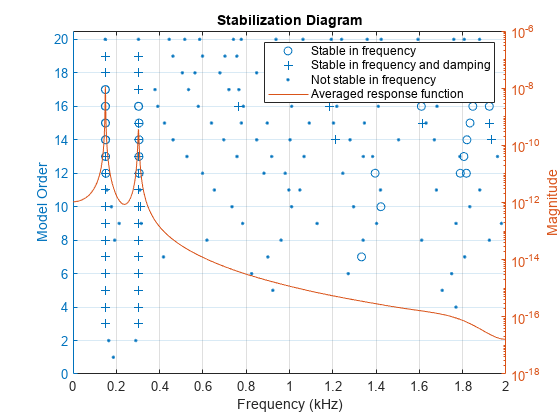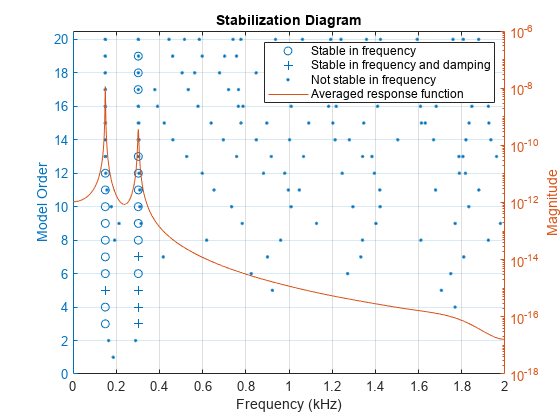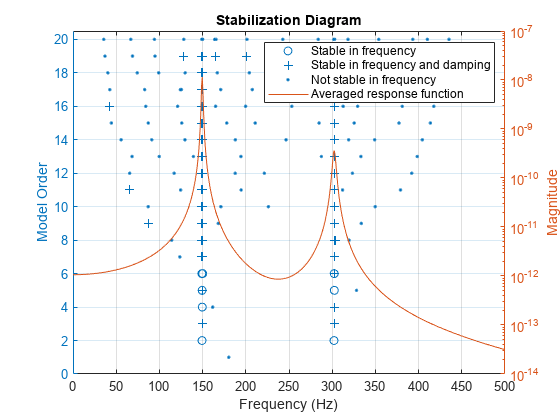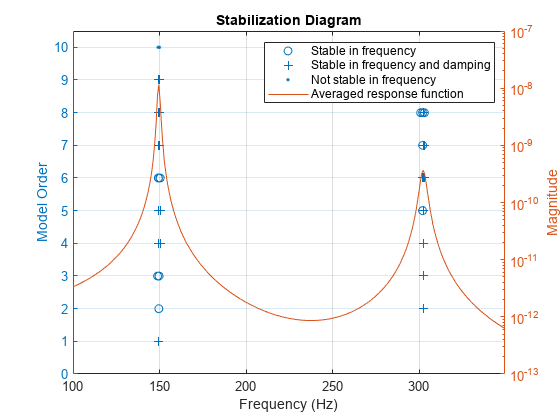modalsd
Generate stabilization diagram for modal analysis
Description
modalsd(
generates a stabilization diagram in the current figure.
frf,f,fs)modalsd estimates the natural frequencies and damping
ratios from 1 to 50 modes and generates the diagram using the least-squares
complex exponential (LSCE) algorithm. fs is the sample
rate. The frequency, f, is a vector with a number of
elements equal to the number of rows of the frequency-response function,
frf. You can use this diagram to differentiate between
computational and physical modes.
modalsd( specifies
options using name-value pair arguments.frf,f,fs,Name,Value)
fn = modalsd(___)fn, identified as being stable
between consecutive model orders. The ith element contains a
length-i vector of natural frequencies of stable poles.
Poles that are not stable are returned as NaNs. This syntax
accepts any combination of inputs from previous syntaxes.
Examples
Input Arguments
Name-Value Arguments
Output Arguments
References
[1] Brandt, Anders. Noise and Vibration Analysis: Signal Analysis and Experimental Procedures. Chichester, UK: John Wiley & Sons, 2011.
[2] Ozdemir, Ahmet Arda, and Suat Gumussoy. "Transfer Function Estimation in System Identification Toolbox™ via Vector Fitting." Proceedings of the 20th World Congress of the International Federation of Automatic Control, Toulouse, France, July 2017.
[3] Vold, Håvard, John Crowley, and G. Thomas Rocklin. “New Ways of Estimating Frequency Response Functions.” Sound and Vibration. Vol. 18, November 1984, pp. 34–38.
Version History
Introduced in R2017a



